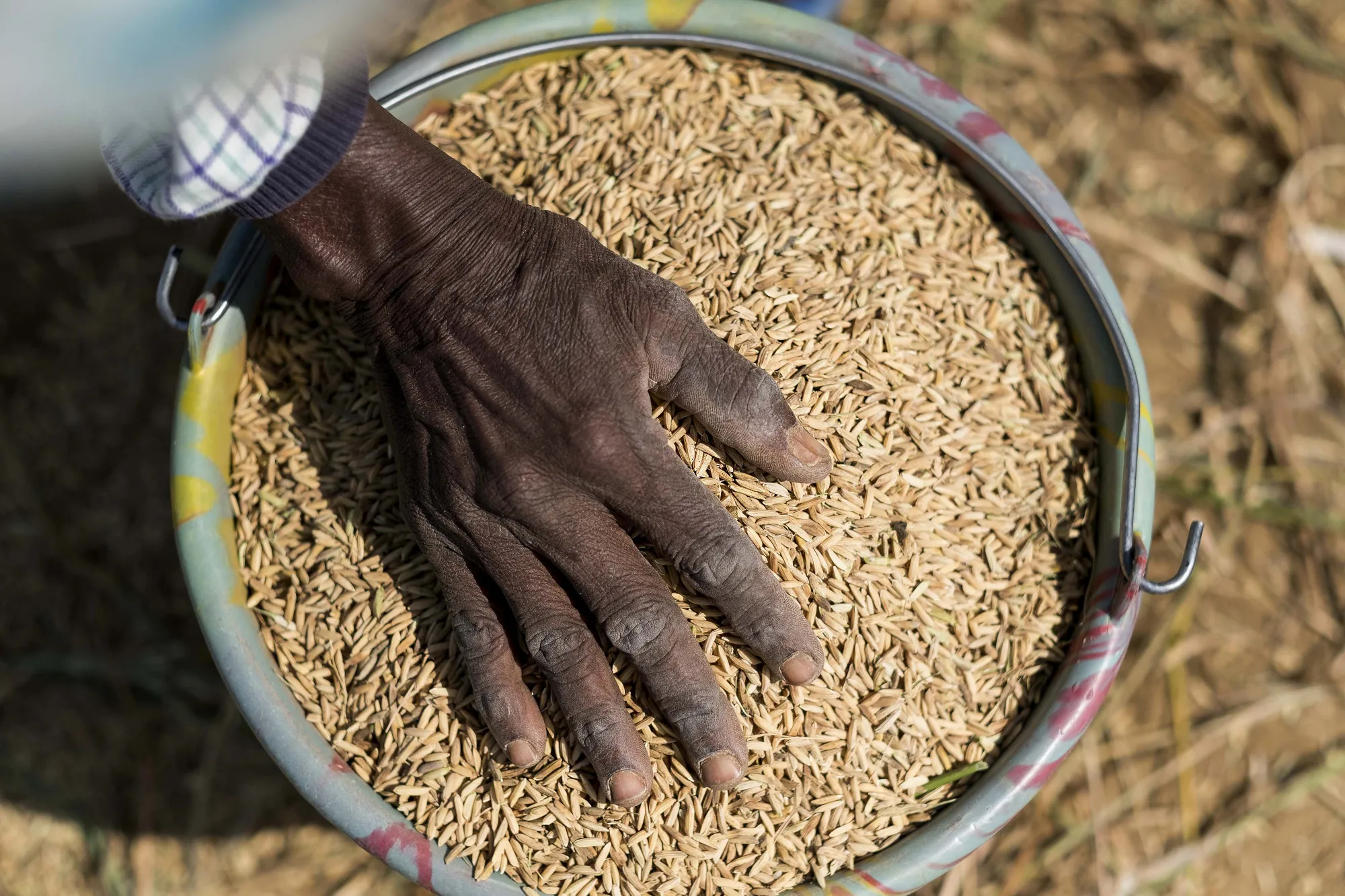
Friday 10th October 2025.

by inAfrika Newsroom
West Africa rice demand still outstrips local supply by a wide margin. The region imports nearly half of what it eats. That leaves households exposed to price swings, currency shocks, and climate risks. ECOWAS wants regional rice self-sufficiency by 2030. The path runs through smallholder-inclusive business models that raise yields, cut losses, and secure markets.
Nigeria and Ghana show the gap. Nigeria’s rice deficit tops 43%. Ghana’s sits near 50%. Official trade data may understate imports because informal flows are hard to track. Either way, dependence is costly. Exchange-rate moves and global freight shifts lift prices without warning. COVID-era spikes showed how fast bills can rise.
The fix starts on farms but must run the full chain. Farmers need climate-smart inputs and practical training they can use in the next season, not the next decade. Drought-tolerant seed and timely agronomy advice move the needle first. Digital tools can help with weather, planting windows, and pest alerts. Insurance bundled with loans keeps growers in business after a bad year. Block farming reduces last-mile delivery costs and makes training efficient. Tripartite finance—farmer, buyer, lender—aligns credit to production and offtake.
Agri-SMEs carry much of this load. They coordinate inputs, extension, aggregation, and mills. Yet they face thin margins, high risk, and expensive capital. Inflation and weak currencies raise input costs fast. Weather shocks ruin planting plans and destroy crops. Insecure zones slow fieldwork and raise logistics costs. Poor rural roads and limited storage drive post-harvest losses. Affordable finance remains scarce, especially for women-led firms and farmers. These pressures push companies to ration working capital and accept side-selling as a cost of doing business.
Even so, workable models exist. Coscharis Ltd in Anambra runs a block-farming approach that centralises input delivery and training. An inclusive-business review in 2024 found yields rising from about 2 to 3.5 tonnes per hectare. Farmer incomes doubled in the program area. The company offtook roughly 42,525 tonnes of paddy under clear contracts. Lower unit costs and disciplined logistics made the numbers add up.
Northern Ghana’s Tamanaa Company built a gender-transformative model around women farmers. Village Savings and Loan Associations extend credit where banks do not reach. Parboiling centres and husk-processing units cut losses and add value from by-products. The firm lifts quality and volume while recycling waste into useful inputs. It proves that inclusion and efficiency can move together.
Rujo AgriTrade invests in seed multiplication and organic fertiliser to build resilience. Its signed offtake deals give farmers a guaranteed buyer at harvest. “We spell out our obligation to buy the crop,” said Managing Director Joshua Toatoba. That assurance stabilises cash flow for growers and supply for the business. The company now draws on a base of more than five thousand farmers and reports higher average yields.
The lessons repeat across projects. First, certainty wins. Clear offtake and fair pricing reduce side-selling and help lenders fund inputs. Second, service density matters. When inputs and training reach clustered farms, costs drop. Third, women’s participation is a multiplier. Access to savings groups and tailored training expands acreage and raises quality. Fourth, waste is a resource. Husk and bran can power boilers, feed livestock, or enrich soils. Fifth, risk tools—insurance and forward contracts—keep farmers and SMEs alive after shocks.
Scaling is the test. The region does not lack pilots. It lacks capital and coordination to run proven playbooks at national scale. Policymakers can help by speeding seed approvals, upgrading rural roads, and co-funding storage near milling hubs. Development finance can extend tenors for working-capital lines that match crop cycles. Regulators can back standard contracts that reduce disputes. Public agencies can publish weekly paddy prices to anchor deals and deter opportunism.
Data discipline closes the loop. Simple dashboards should track hectares under improved seed, input delivery dates, training sessions, yields, moisture at delivery, mill recovery rates, and payment times. Publishing those metrics builds trust and attracts lenders. It also exposes bottlenecks early enough to fix them mid-season.


